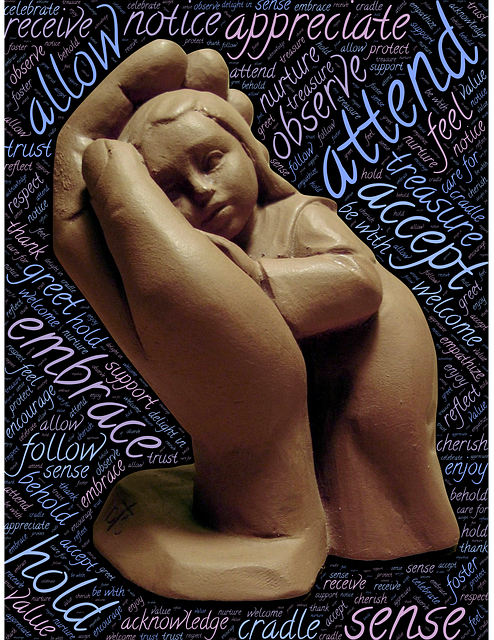In her presentation for the Mindfulness & Meditation Summit, Kelly McGonigal discussed The Neuroscience of Compassion. Kelly is the author of The Science of Compassion and The Upside of Stress.
Kelly maintains that for compassion to be realised and sustained, the following six conditions must be present:
- awareness and recognition of suffering
- feeling of concern for, and connection to, the one who is suffering
- desire to relieve suffering
- belief that you can make a difference
- willingness to respond or take action
- warm glow/sense of satisfaction
She spoke about how compassion unfolds in the body, a mind-body state that has been verified by neuroscience. Throughout her presentation she drew heavily on a neuroscience model of compassion developed by Ashar, Andrews-Hanna, Dimidjian & Wager (2016). This systems-based model of the brain shows how the core functions of compassion are manifest in different parts of the brain, and each function can activate multiple parts of the brain simultaneously.
The three core functions identified in the neuroscience model of compassion are:
- Social cognition
- Visceral/emotional empathy
- Reward motivation
Social cognition has to do with the cognitive aspect of our social interactions – in other words, “how people process, store, and apply information about other people and social situations”. Visceral/emotional empathy, on the other hand, is the emotional response generated in us when we connect with, or feel concern for, someone who is suffering. Reward motivation relates to the personal, intrinsic satisfaction – warm inner glow – experienced when we are compassionate (which serves as a motivator of compassion).
Kelly maintains that all three brain functions have to be present, and effective, for sustainable compassion towards others and they need to be in balance.
For example, what potentially impedes effective social cognition is “dehumanization” of the observed individuals as a result of “unconscious bias” influencing our perception of others who differ in race, age or gender, or even in the sporting team they support. Kelly reports, as did Dr. Richie Davidson, that meditation practices – such as loving-kindness and compassion meditation – can reduce such implicit bias and provide a more balanced social cognition that is not blind to the suffering and needs of a particular group.
Visceral/emotional empathy has to be balanced with reward motivation that can occur with compassionate action. Kelly reports research that shows that if people are trained in empathetic meditation, without experiencing the reward component of compassion, they can potentially experience “empathetic distress”- a form of emotional overload resulting, in part, from too close an identification with the sufferer without the reward relief experienced through compassionate action.
This last imbalance resulting in “empathetic distress” has been observed in people in helping roles in difficult situations, e.g. war arenas. Where helpers do not experience, or stop experiencing, the intrinsic rewards of compassionate action, they are prone to “burnout”. Burnout occurs when we exhaust our reserve energies as a result of trying to close the gap between effort and intrinsic reward, in other words, we start working harder and harder for less and less positive outcome – we perceive that we are ceasing to make a difference. Research has been shown that for sustainable compassionate action in these difficult arenas, helpers need to experience “reward motivation” – the intrinsic satisfaction sometimes experienced as a warm inner glow.
Another important insight from neuroscience mentioned by Kelly is that we do not need to have self-compassion to be compassionate towards others. Increasingly, compassion towards others is seen as an innate human capacity. On the other hand, we seem to create all kinds of barriers to self-compassion such as fear, anxiety or anger. Kelly maintains that the biggest barrier to self-compassion is the absence of the reward satisfaction when people feel the suffering of others, but do not experience the warm glow from taking action that makes a difference to someone’s suffering.
In summary, as we grow in mindfulness through loving-kindness and compassionate meditation, we can reduce our unconscious biases, free ourselves from the inertia of “empathetic distress” and open our minds and bodies to compassionate action resulting in reward motivation that will sustain that compassion over time.
By Ron Passfield – Copyright (Creative Commons license, Attribution–Non Commercial–No Derivatives)
Image source: Courtesy of johnhain on Pixabay

2 thoughts on “Compassion and Neuroscience”